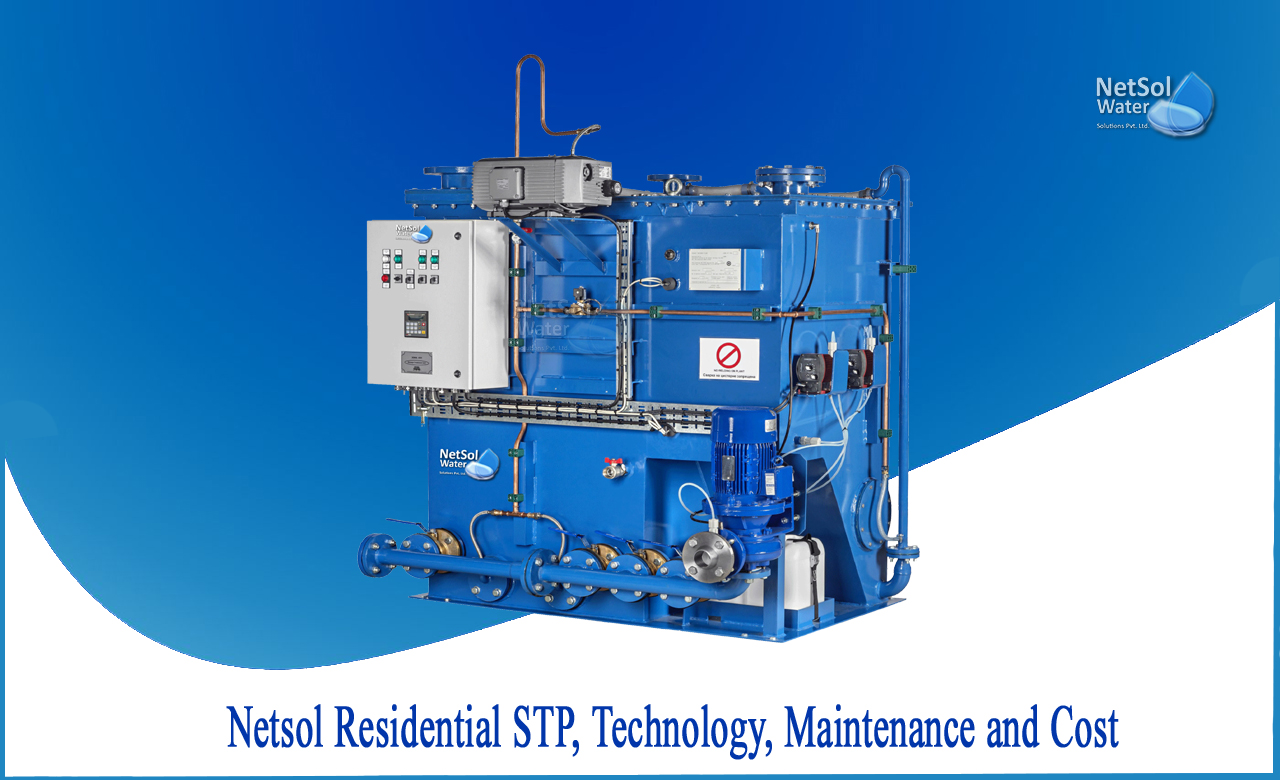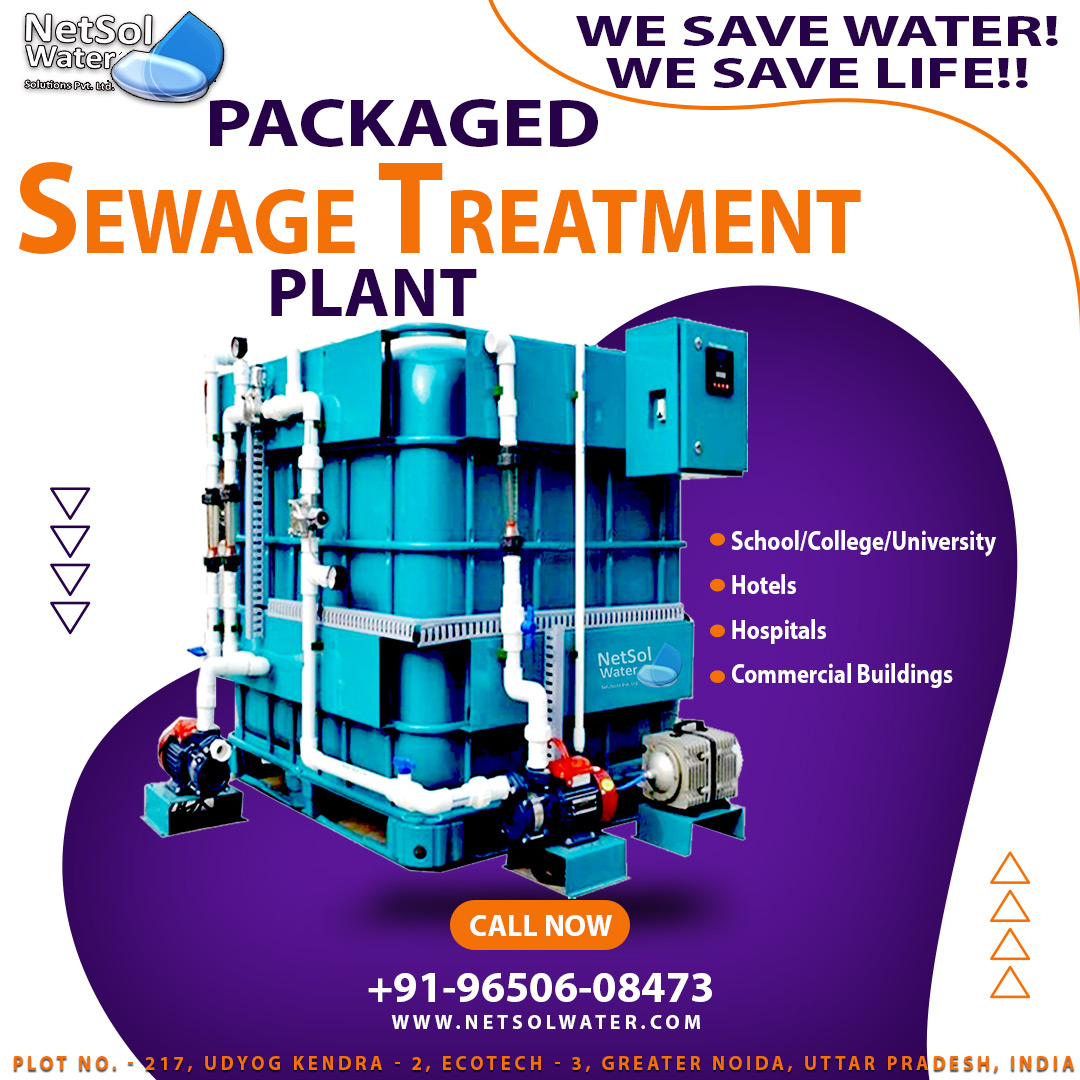Overview
Sewage treatment facilities filter and treat wastewater/sewage, converting it to a cleaner 'effluent' that can be returned to nature in a safer, more environmentally friendly state. These aid in restoration of ground water balance as well as prevention of diseases, and the reduction of environmental degradation and pollution.
The purified water in housing societies can be utilised for non-potable applications like gardening, car washing, building, irrigation, and toilet flushing.
Cleaner water would reduce the number of deaths caused by water-borne diseases, have a lower environmental impact from pollution, and, on a much smaller scale, no house would have to pay for water tankers because there would be an abundance of groundwater on macro scales and recyclable water at community levels.
What are the Different technologies of Residential STPs?
1: Plant for activated sludge (ASP): Netsol’s activated sludge process is an important part of the wastewater treatment process. Raw sewage is blasted with air or oxygen. It works best with large amounts of water. In unique tank, wastewater is combined and aerated. Pumping air or oxygen into the activated sludge tank, or employing surface aerators, completes this step in the process. Organic stuff in the wastewater is oxidized, resulting in new cells, carbon dioxide, and water. The sludge particles can subsequently be filtered out by gravity settling.
2: Aerated submerged filter (SAF): Individual cells within the tank are arranged in series in the Netsol’s SAF process, and wastewater flows through each chamber in order. A fine bubble diffuser system feeds oxygen from blowers in the control kiosk to stimulate biomass growth, and each cell includes a media on which biomass develops.
3: Filters for Suspended Media (SMF): Netsol’s SMF media filters are used to filter suspended particles from water and fluid systems. Solids are eliminated to a 5 micron level using specialized permanent media. The pressure drop across the media will increase when solids are eliminated. The device will be based on pressure drop or time automatically backwash to self-clean the media.
4:Trickling Filter: Netsol’s trickling filter is a wastewater treatment system of this type. It is made out of gravel, coke, fixed bed of rocks, slag, polyurethane foam, sphagnum peat moss, ceramic, or plastic media, over which sewage or other wastewater runs downward, causing a layer of microbial slime (biofilm) to form and cover the bed of media.
Cost incurred in Netsol STPs
The overall cost of owning and operating a sewage treatment plant for at least 20 years, includes purchase price, installation, maintenance, power, and spare parts. The units can be installed overground or underground in as little as two days and come in capacities ranging from 2KLD to 100+ KLD.
For a small residential STP system, the Netsol Sewage Treatment Plant costs Rs. 2, 99, 000/- INR.
Maintenance of NetsolSTPs
STPs with a low budget will need to be emptied and monitored frequently, but even a good one will need to be de-sludged and maintained at least once a year. To balance the internal and external pressures, it should be immediately replenished with water after desludging. Rainwater should never be allowed to enter the STP. It has the potential to wash microorganisms out and cause floods.
The society, not the manufacturer's service staff, must empty primary tanks and soakaways on a regular basis.
During maintenance visits, the following components should be examined:
- Unobstructed, powerful, and efficient ventilation and blower
- If necessary, replace mechanical components
- Checking for air filters and inspecting pipes
- Checking for bubbles in the diffuser
- Examine the colour and odour of the biomass
- Effluent quality at the end
- Damage to all chambers must be repaired
- The integrity of the lid seal
- Diaphragms and valve boxes should be replaced
For a complete understanding of each technique, consult Netsol’s maintenance instructions handbook.
State pollution boards must grant a CFO (Consent for Operation) to STPs, which must be renewed every five years. Consent is provided upon the submission of papers, consent fees, and a thorough inspection by Board regional offices.




